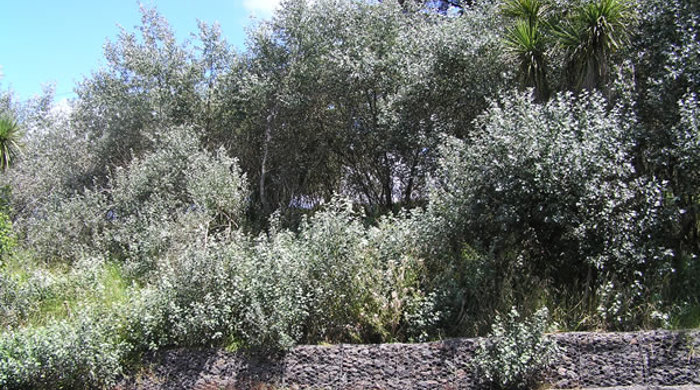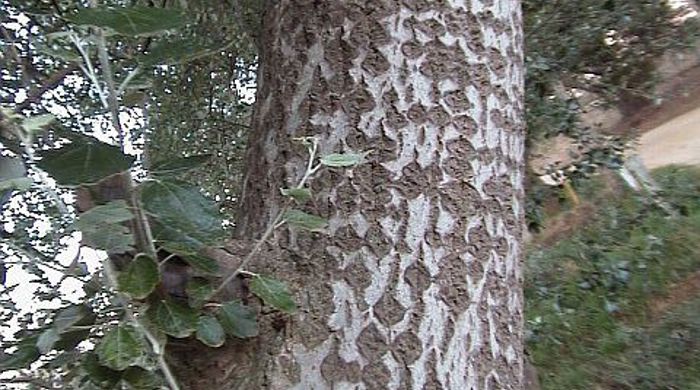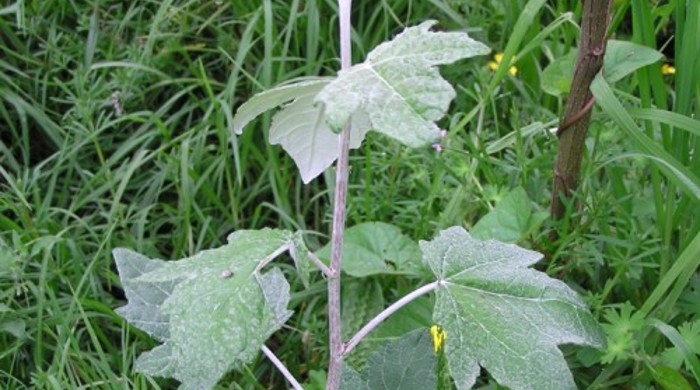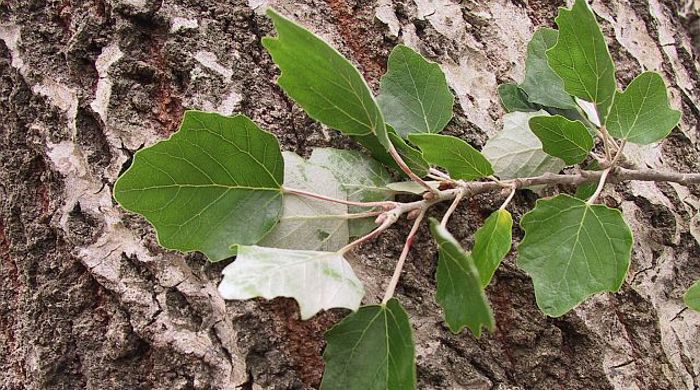Populus alba
Silver poplar
Also known as:
White poplar
Family: Salicaceae
Origin: Eurasia, North Africa
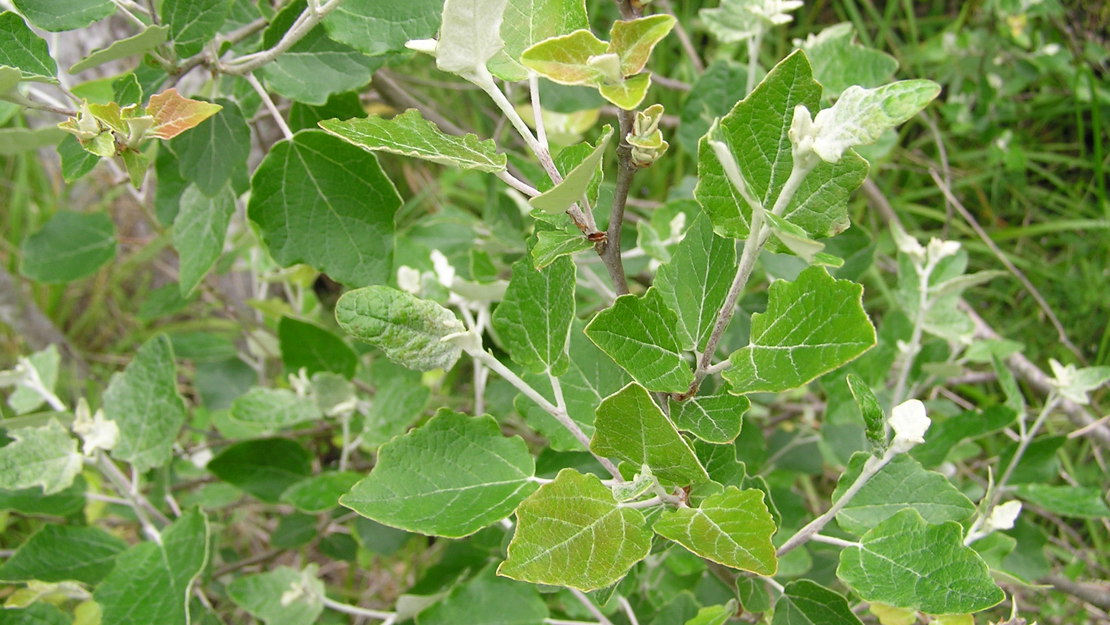
Regional Pest Management Plan (RPMP) status
- Not a legally declared pest
General description
Deciduous suckering tree < 25 m tall. Bark is grey and smooth or slightly fissured. Leaves are < 10 x 9.5 cm, lobed or toothed, alternate, green on top and white underneath. Flowers are pale, drooping, < 8 cm long catkins borne in September. Capsules contain cotton-like white seeds.
What you need to know
Although silver poplar is not a legally declared pest plant, it may still be invasive in some situations. Consider lower-risk alternatives for your garden, such as native plants.
Habitats
Riparian margins, forest, coastal dunes, grassland, pasture, swampy ground, wasteland.
Dispersal
Does not produce viable seed. Vegetative spread from suckering. Human-mediated dispersal through dumping of garden waste, deliberate plantings and movement of contaminated soil.
Impact on environment
Can form dense stands, preventing native seedling recruitment. Roots may clog waterways.
Control
Site Management
Always treat standing plants, do not cut down as trees will coppice. Allow to fully die before felling. Follow up treated areas 3 times per year. Encourage natural regeneration of native plants or replant treated areas where possible after 2-3 treatments to establish dense ground cover and minimise reinvasion.
Recommended approaches
Physical control
Method: Dig out.
Plant parts requiring disposal: All parts.
Disposal options: Remove to greenwaste or landfill.
Biocontrol
Biocontrol is currently not available for this species.
Community agrichemical control recommendations
No qualifications: Cut stump and paste freshly cut base of stems with metsulfuron gel.
Certified Handler/Experienced agrichemical user: Drill and inject trees with 10g metsulfuron-methyl per 1L of water if safe to do so. Drill 18mm holes (tangentially angled downwards) in a spiral up the trunk.
For 50mm stems drill one hole. For 100mm stems drill two holes. For larger stems drill holes 150mm apart. Foliar spray seedlings with 5g metsulfuron-methyl per 10L of water and 20ml penetrant.
Safety notes
Large trees must not be drilled that are closer than 1.5 times the height of the tree from paths, walkways and property.
Trees over 4 metres in height should be removed by a qualified arborist.
;Caution: When using any herbicide or pesticide please read the label thoroughly to ensure that all instructions and safety requirements are followed.
